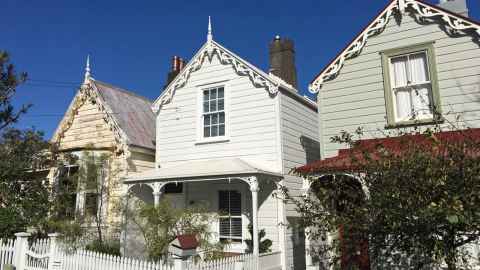What is wrong with the Housing Enabling Bill?
5 August 2022
A likely outcome of the Housing Affordability Bill will be houses and apartments that are only affordable to those with incomes way above the median.

Opinion: No-one disputes that there is a need for more housing in our cities. It is completely unjustifiable for people to be homeless, for families to be living in cars, and for many to be spending far too much of their income on over-crowded and low-quality dwellings. But is the Housing Enabling Bill the best legislation to solve our extreme housing problems?
Discussions in the media have seen the Bill as a conflict between owners of houses in Special Character Areas in the inner suburbs and those seeking to buy new dwellings in these suburbs. There is a notion of a perceived unfairness that these locations are not taking their share of needed density. However, these inner-city suburbs are already considerably denser than many outer suburbs. For example, as of 2018, Freemans Bay and Ponsonby had close to 2.5 times the density of dwellings than Manurewa.
But there are more fundamental problems with the legislation.
Firstly, it is an assault on local democracy. During the Auckland Unitary Planning process, the Council worked on delivering residential zoning for a substantial number of new dwellings. The Council determined types and densities of new dwellings, infrastructure availability in specific locations, and planning requirements needed for a more sustainable city. The Council used local democratic processes - engaging with local communities and receiving submissions, with locally-elected councillors making the final zoning decisions.
Wellington (as decided by the two major political parties) has chosen to ignore all of this. The Bill requires almost all residential sites to be zoned for medium density –enabling a single house to be replaced by three 3-storey terrace houses (and in some cases 6-storey apartments). Limited standards do not recognise the size of the sites, the topography, or any of the climate change impacts which are heading our way. Development at these densities on small sites will deprive many residents of winter sunlight, and reduce open space for absorbing stormwater, without any requirements to plant trees for shade.
This Bill is handing to land-owners blanket approval for trebling the density of
development on any one site, and hence an increase in asset value, without
requiring anything in return.
Secondly, it is an assault on our local heritage. Is it acceptable for the politicians in Wellington to tell Aucklanders that their Special Character Areas are not worth preserving? These areas encompass some of the most historic parts of the city, enabling us to better understand and connect with how our city developed from the small settlement in the 1850s to today.
Will we become reliant on owners of houses in Special Character Area becoming guardians of our collective heritage? An assault on our heritage might be acceptable if the end result was well-designed quality housing that is affordable to those families that are most in housing need, but there is nothing in this Bill to deliver that.
Thirdly, this Bill is handing to land-owners blanket approval for trebling the density of development on any one site, and hence an increase in asset value, without requiring anything in return. Why didn’t Wellington require some housing benefit?
The Bill could have required that the new dwellings be accessible for anyone with disability needs. This “universal design” would have gone some way to addressing the needs of a significant proportion of the community.
The Bill could have required that the development deliver much more sustainable dwellings than the current standards, by linking delivery to the Homestar rating system. This could have contributed to reducing the carbon and ecological footprints of new housing.
The Bill could have required that a portion of the new dwellings be designed for families in significant housing need and be affordable for them, delivering through Community Housing Providers. This could have made a small but significant dent in the real housing needs in this country.
These three missing “opportunities” are not from outer space. They can be found in many planning systems in the UK and North America.
Instead, a more likely outcome of this legislation will be houses and apartments that are only affordable to those with incomes way above the median. Tragically there is nothing in the Bill to prevent investor purchasers leaving dwellings empty and watching the value of their asset grow.
Tricia Austin is a senior lecturer in urban planning in the School of Architecture and Planning with research interest in affordable housing and sustainable cities.
This article reflects the opinion of the author and not necessarily the views of the University of Auckland.
This article was first published in the New Zealand Herald on 4 August, 2022.
Media contact
Margo White
M: 021 926 408
E: margo.white@auckland.ac.nz